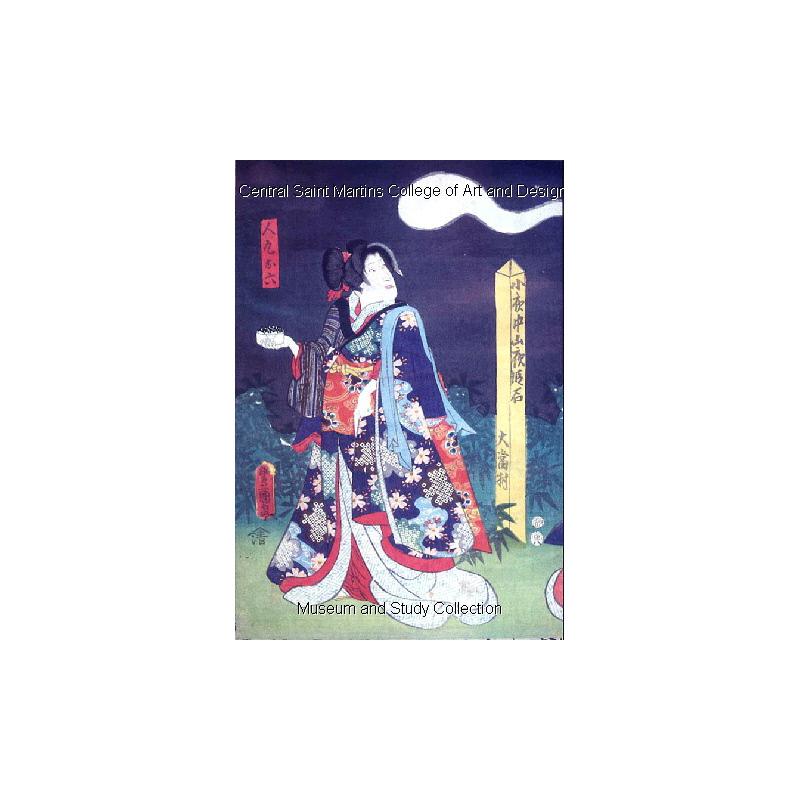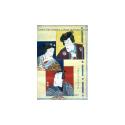
Bandô Shûka I (初代坂東しうか) as Hitomaru Oroku (人丸お六) (left)
Collection:CSM Museum & Study Collection
Date: 1854
Maker: Utagawa Kunisada (歌川国貞)
Medium: O-ban Nishiki-e (大判錦絵, large-format coloured print)
Object number: O.11.68
DescriptionA scene from a play titled 'Azuma Kudari Goju-san Tsugi (吾嬬下五十三駅, The capital (Kyoto) from the Fifty-three Stations of the Tokaido highway),' performed at the Kawarazaki za (河原崎座) from the 4th day of the 8th month, 1854.
This scene is explained as Sayo no Nakayama Konaki Ishi (小夜中山夜啼石, a stone that cries in the night in Sayo no Nakayama Mountain). In this Sayo no Nakayama Mountain, there was folklore that the stone was haunted by the spirit of a woman who was robbed of her money and killed by a person passing by when she suffered labour pains. The stone was then called 'Yo Naki Ishi (夜啼石, a stone that cries in the night)' because people hear cries from it every night.
Oroku (お六) is looking at a ghost-like white smoke.
This scene is explained as Sayo no Nakayama Konaki Ishi (小夜中山夜啼石, a stone that cries in the night in Sayo no Nakayama Mountain). In this Sayo no Nakayama Mountain, there was folklore that the stone was haunted by the spirit of a woman who was robbed of her money and killed by a person passing by when she suffered labour pains. The stone was then called 'Yo Naki Ishi (夜啼石, a stone that cries in the night)' because people hear cries from it every night.
Oroku (お六) is looking at a ghost-like white smoke.




